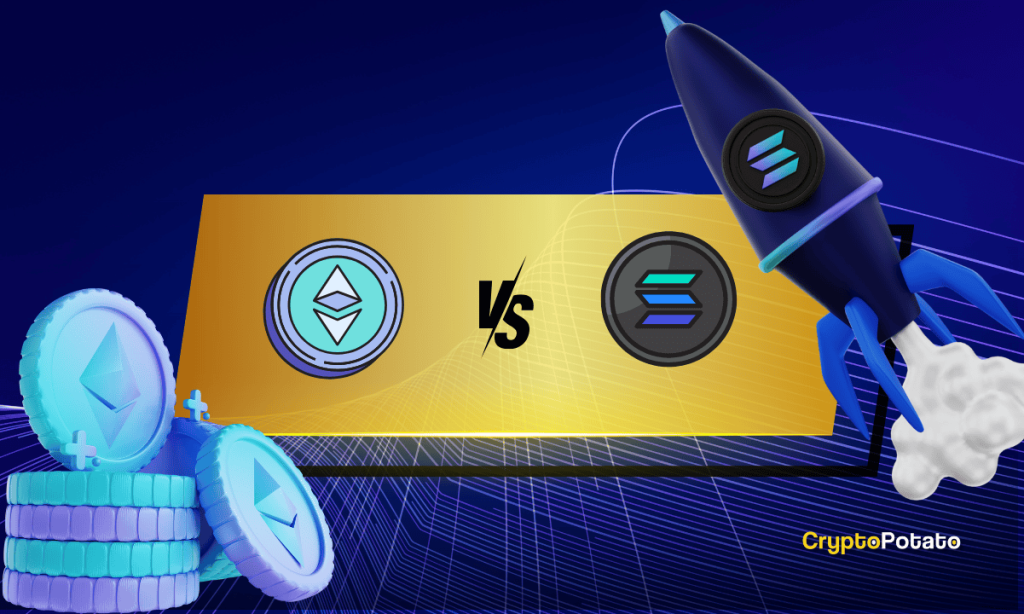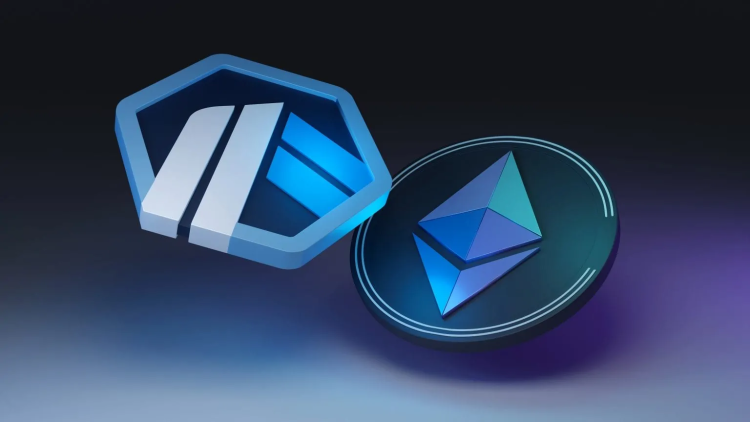In the sprawling universe of cryptocurrency, Ethereum has long reigned as the undisputed king of smart contracts and decentralized applications. Its first-mover advantage, massive developer community, and unparalleled network effect have made it the foundational layer for most of the world’s DeFi, NFTs, and decentralized autonomous organizations (DAOs). To challenge Ethereum has often been seen as a fool’s errand, a sentiment encapsulated in the once-popular phrase “ETH killer” – a label that many ambitious projects earned but none truly lived up to. However, the landscape is shifting. A new generation of Layer-1 blockchains, learning from Ethereum’s successes and failures, has emerged not with the goal of outright “killing” Ethereum, but of carving out significant market share by addressing its core weaknesses: high transaction fees, network congestion, and sometimes sluggish performance. Solana, Avalanche, Aptos, and others are mounting a serious, multi-front assault on Ethereum’s dominance. This raises a critical question for investors, developers, and users alike: Can Ethereum’s vast, established ecosystem withstand this onslaught, or will the future of decentralized applications be a multi-chain world where its dominance is permanently eroded?
This battle is not merely a technical one; it is a contest of philosophies, economic models, and community building. Ethereum’s path has been one of deliberate, security-first decentralization, often at the expense of scalability in the short term. Its competitors have prioritized speed and low cost, making different trade-offs between decentralization and performance. The outcome of this conflict will determine the architectural foundation of the next generation of the internet. This article will examine the pillars of Ethereum’s enduring DeFi dominance, analyze the potent competitive threats posed by Solana, Avalanche, and Aptos, and ultimately assess whether Ethereum can maintain its edge in an increasingly crowded and capable field.
The Fortress: Pillars of Ethereum’s DeFi Dominance
Ethereum’s position is not accidental. It is fortified by a powerful combination of network effects, security, and cultural momentum that is incredibly difficult to replicate.
1. The Unmatched Network Effect: Ethereum’s greatest asset is its entrenched ecosystem. The vast majority of value in decentralized finance is locked on Ethereum. Major protocols like Aave, Uniswap, Compound, and MakerDAO were born on Ethereum and hold billions of dollars in their smart contracts. This creates a powerful gravitational pull: developers build where the users and money are, and users go where the best applications are. This virtuous cycle has created a moat that is Ethereum’s primary defense.
2. Security and Decentralization: Ethereum’s proof-of-stake consensus mechanism, secured by over $100 billion in staked ETH, makes it one of the most secure decentralized networks in existence. This unparalleled security is non-negotiable for institutional players and large-scale applications managing billions in value. While other chains may be faster, they often achieve this through a degree of centralization (e.g., fewer validators, more centralized infrastructure) that makes the ecosystem wary of placing extreme value on them long-term.
3. The Brand and Cultural Cachet: “Ethereum” is synonymous with “smart contract blockchain” in the same way “Google” is with search. It has immense brand recognition and trust. For many, it is the default choice. This cultural dominance extends to its developer community, which is the largest, most active, and most innovative in the space. This ensures a constant stream of new applications and upgrades, keeping the ecosystem dynamic.
4. The Rollup-Centric Roadmap: Ethereum’s strategic response to its scalability issues is not to change its base layer fundamentally, but to offload computation to Layer-2 scaling solutions like Arbitrum, Optimism, and Polygon. This “rollup-centric” roadmap allows Ethereum to maintain its supreme security and decentralization at the base layer while enabling cheap and fast transactions on L2s. If successful, this strategy would allow Ethereum to have its cake and eat it too: unmatched security and scalability.
The Challengers: A Multi-Front Assault on the Throne
The new generation of Layer-1s has avoided the mistakes of their predecessors. They are not trying to beat Ethereum at its own game; they are changing the rules entirely by focusing on performance and user experience.
Solana: The Speed Demon
Solana’s value proposition is breathtakingly simple: raw, unparalleled speed. With theoretical throughput of 65,000 transactions per second (TPS) and sub-second finality, it makes Ethereum’s base layer feel archaic.
- Strengths: Its performance makes it ideal for high-frequency use cases like decentralized trading, micropayments, and social applications that require instant, feeless interactions. Its thriving NFT ecosystem and the rise of the Saga phone demonstrate its cultural momentum.
- Weaknesses: Solana’s Achilles’ heel has been network reliability. Several major outages have undermined its narrative as a reliable global settlement layer. Its pursuit of speed has also led to criticisms over its level of decentralization compared to Ethereum.
Avalanche: The Balanced Contender
Avalanche takes a more modular approach. Its key innovation is the subnet architecture, which allows projects to launch their own application-specific blockchains that are secured by the main Avalanche validators.
- Strengths: This offers a compelling compromise: customizability and scalability for dApps without sacrificing security. It appeals to enterprises and large DeFi projects that want their own dedicated chain. Its consensus mechanism is also incredibly fast and efficient.
- Weaknesses: While technologically sophisticated, Avalanche has sometimes struggled with marketing and ecosystem growth compared to the buzz of Solana or the brand of Ethereum. The subnet model, while powerful, has yet to see widespread adoption at scale.

Aptos & Sui: The Next Generation’s Next Generation
Born from the ashes of Meta’s Diem project, Aptos and Sui represent the latest evolution in L1 design. They are built with new programming languages (Move) designed for safer smart contract development and novel consensus mechanisms (e.g., Block-STM for parallel execution).
- Strengths: Their key innovation is the focus on parallel execution. While Ethereum executes transactions sequentially, these chains can process many unrelated transactions simultaneously, dramatically increasing throughput. They are well-funded and boast all-star teams.
- Weaknesses: They are the newest and least proven of the challengers. Their ecosystems are still in their infancy, and they have yet to be battle-tested with billions of dollars in value at stake. They must overcome the massive cold-start problem of attracting developers and users.
The Verdict: Can Ethereum Maintain Its Edge?
The question of Ethereum’s enduring dominance does not have a simple yes/no answer. The more likely outcome is not a winner-take-all scenario but a multi-chain future where Ethereum remains the dominant, high-value settlement layer, while other chains thrive as high-performance application hubs.
Ethereum’s Advantages Are Formidable: Its network effect, security, and established community are not easily dislodged. The institutional trust in ETH is miles ahead of its competitors. The L2 roadmap is a brilliant strategic play; if Arbitrum and Optimism can become truly seamless, cheap, and integrated user experiences, they will effectively neutralize the primary advantage of the Solanas and Avalanches of the world.
However, Competition Is Fierce and Real: The challengers are not standing still. They are iterating rapidly, fixing their weaknesses (e.g., Solana’s focus on reliability), and pouring billions in incentives into their ecosystems. They have captured developer mindshare and are the platforms of choice for the next wave of consumer-centric crypto applications, particularly in gaming and social.
Ethereum will not be “killed.” But its market share percentage of total value locked (TVL) and developer activity will almost certainly decrease from its near-monopoly levels. It will become the “Linux” of blockchain—the secure, reliable, foundational bedrock—while other chains act as the “macOS” or “Windows”—more curated and performance-optimized for specific user experiences.
The ultimate winner in this battle is the user. The intense competition is driving unprecedented innovation, better user experiences, and lower costs across all chains. Ethereum’s edge will remain, but it will be a sharper edge, honed by the relentless pressure of capable and ambitious rivals.

























